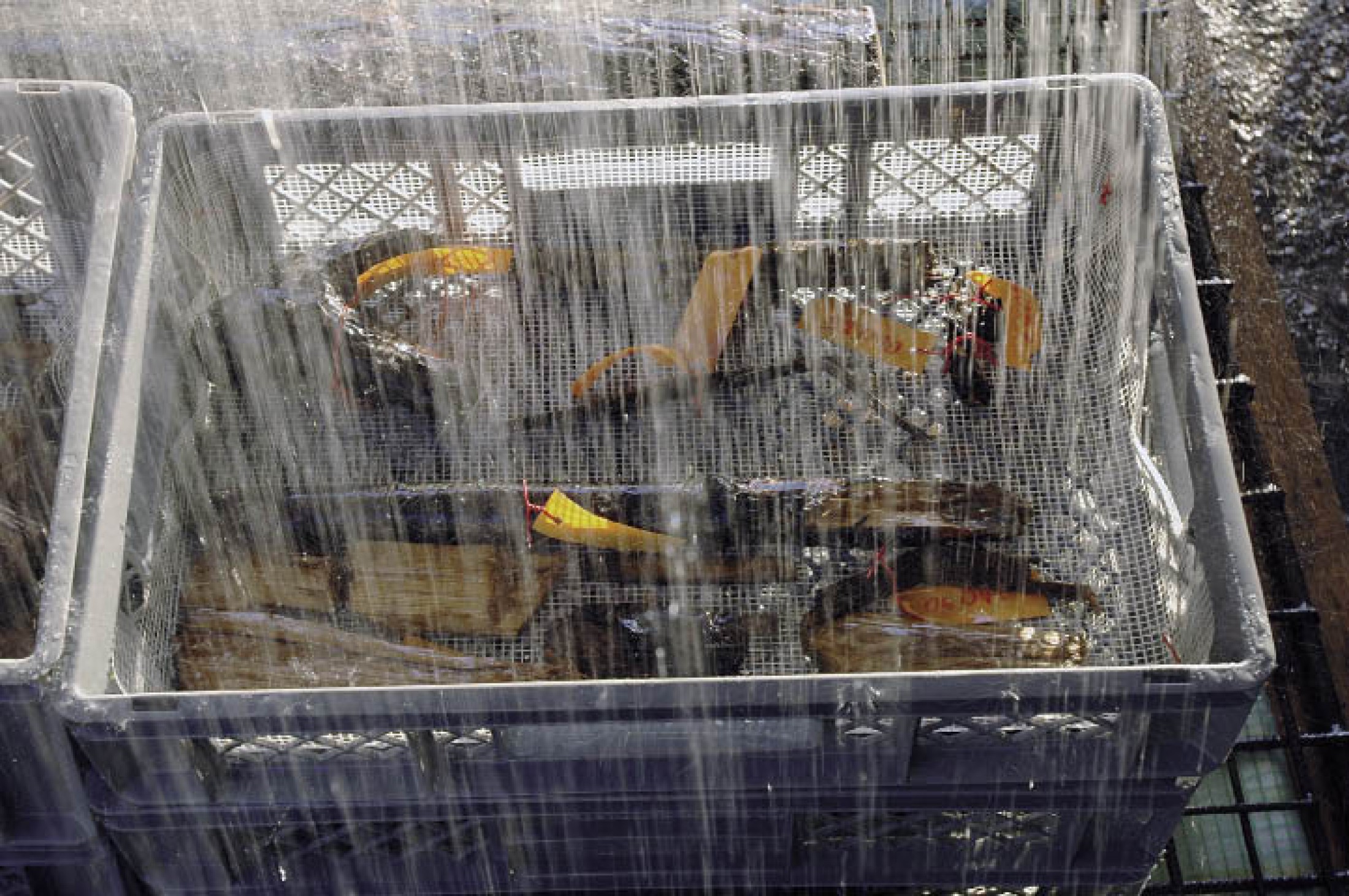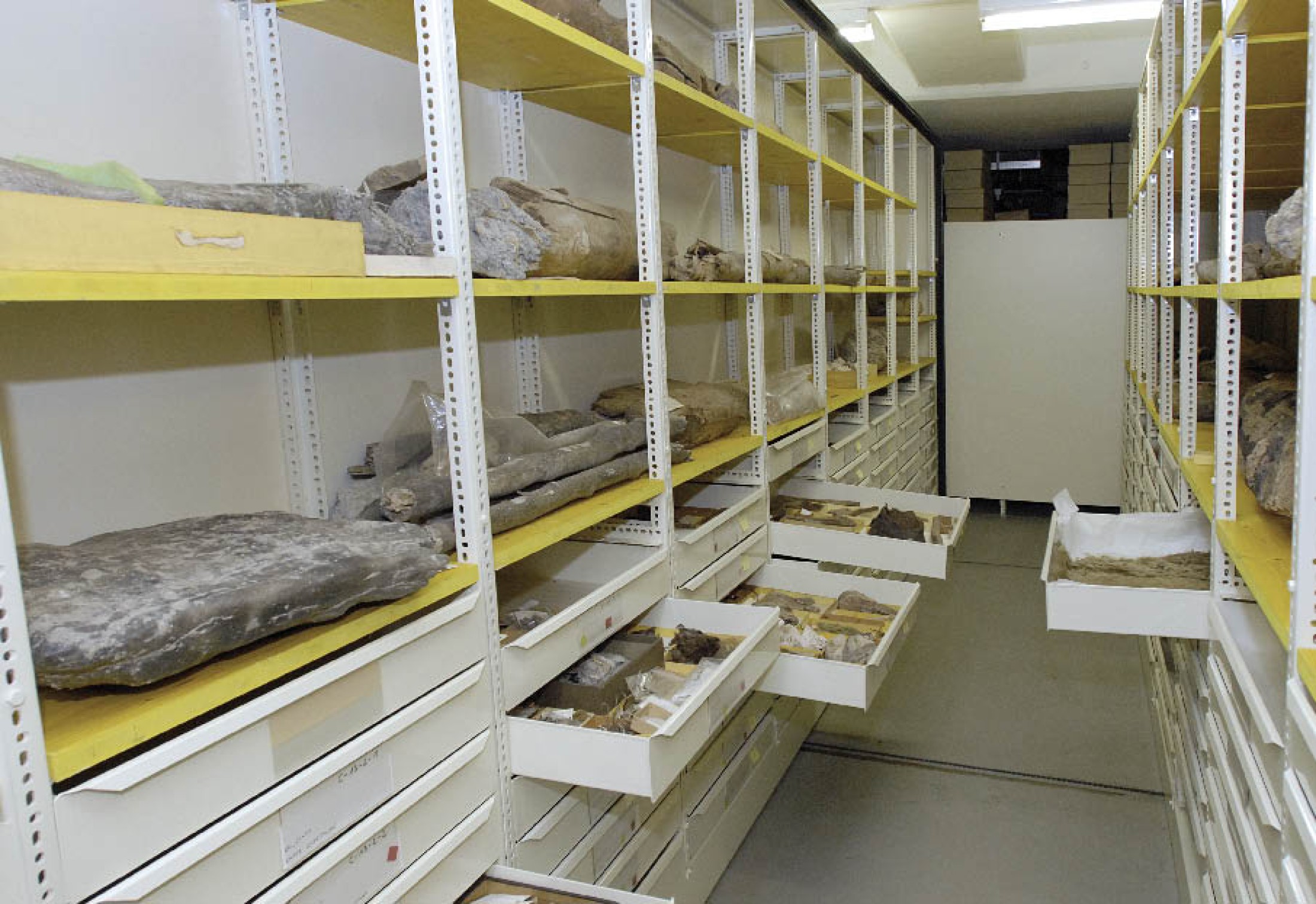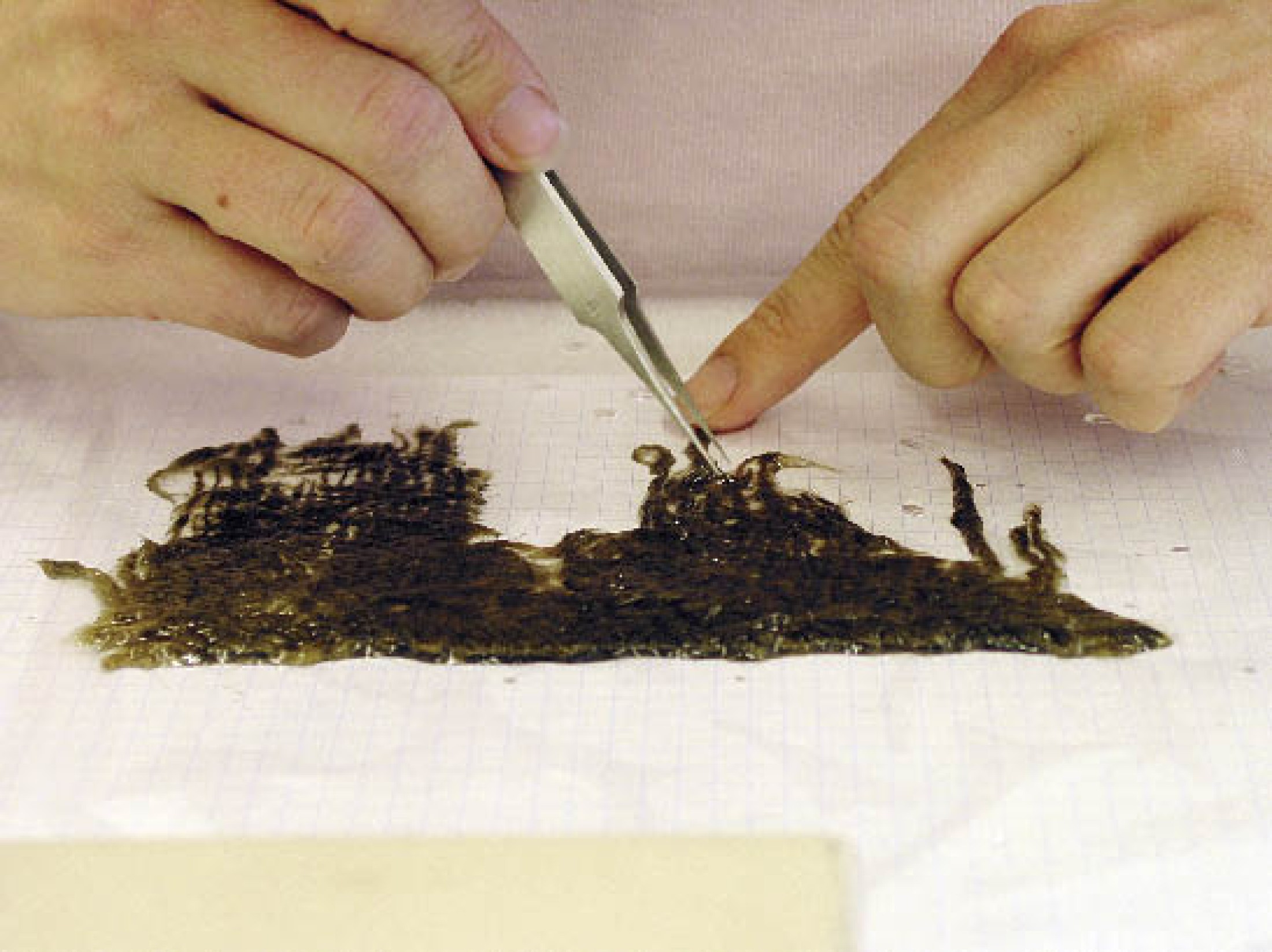Handling the finds
The moist, salt-rich earth in Hallstatt has preserved the many organic finds. Once discovered and excavated, these begin to dry. This process results in the development of sharp-edged salt crystals which could potentially damage the objects. Therefore, desalination is generally the first and most important step before finds are taken to the NHM’s climate-controlled underground storage facility in Vienna.The danger of salt crystals
The desalination process
Drying
Storage
Optimizing conservation concepts
The danger of salt crystals
The salt in the mine consists for the most part of sodium chloride, that is to say table salt, dissolving with a relative air humidity of 75%. The dissolved salts penetrate the core of the fibres of organic finds. In the altered conditions after recovery, the finds dry out rather quickly. Sharp-edged salt crystals form inside them and destroy the existing structure. Salts that have migrated to the surface form rigid crusts, and the flexibility of organic materials decreases considerably with the formation of such hard crystals. Every motion will inevitably cause abrasion and loss of material. This means that textile and leather finds have to be partially desalinated immediately after their recovery, before they dry out and before the crystallisation of salts can damage them.The desalination process
In a still moist condition, textiles and leather are freed of loamy deposits with demineralised water and desalinated. The salts contained in the finds dissolve more readily in demineralised water, and this carries no risk of foreign matter penetrating into the finds. In alternating baths, dissolved material and salts are gently removed. The finds are supported between several layers of a coarse-meshed supporting tissue, in order to make handling easier and to prevent unnecessary loss of fibres and hair. Fine deposits can be dissolved and removed using a variety of sponges and fine brushes, while loose materials can be rinsed off by a thin, carefully directed jet of water – in the case of fur, in the direction of hair growth.Drying
After the wet cleaning, the pieces of textiles and leather are taken out of the supporting tissue. Before they have dried, the threads of the fabric are tweezed out and aligned. Leather finds are either laid flat or brought into their original threedimensional shape. Air drying is slowed down by a buffer material and aluminium films. Because of the generally good condition of the textile and leather finds, we can do without alternative strengthening, cleaning and drying methods.Storage
The textile and leather finds are placed separately in cardboard boxes provided with non-skid underlay and stored in controlled climatic conditions in the basement storage facilities of the Natural History Museum, Vienna. The textiles rest on tablets covered by several layers of cotton fabric, while leather finds are placed hair-side up on cellulose felts. These materials provide sufficient adhesion to prevent the objects from slipping, for instance with drawers being opened. Such materials must imperatively be natural, pre-washed and free from any finish. The objects can be stored and transported or even exhibited on the tablets, and they are ready for scientific assessment.Optimizing conservation concepts
In addition to the conservation measures taken with new finds, the condition of all textile and leather finds of the last 150 years has been checked in recent years and specific conservation techniques have been developed in response to particular conditions. Furthermore, the storage conditions have been standardized and optimised. The conservation concepts were developed at the Institute of Conservation and Restoration of the Vienna University of Applied Arts.(Gengler, C. – von Miller, D. – Loew, C.)





